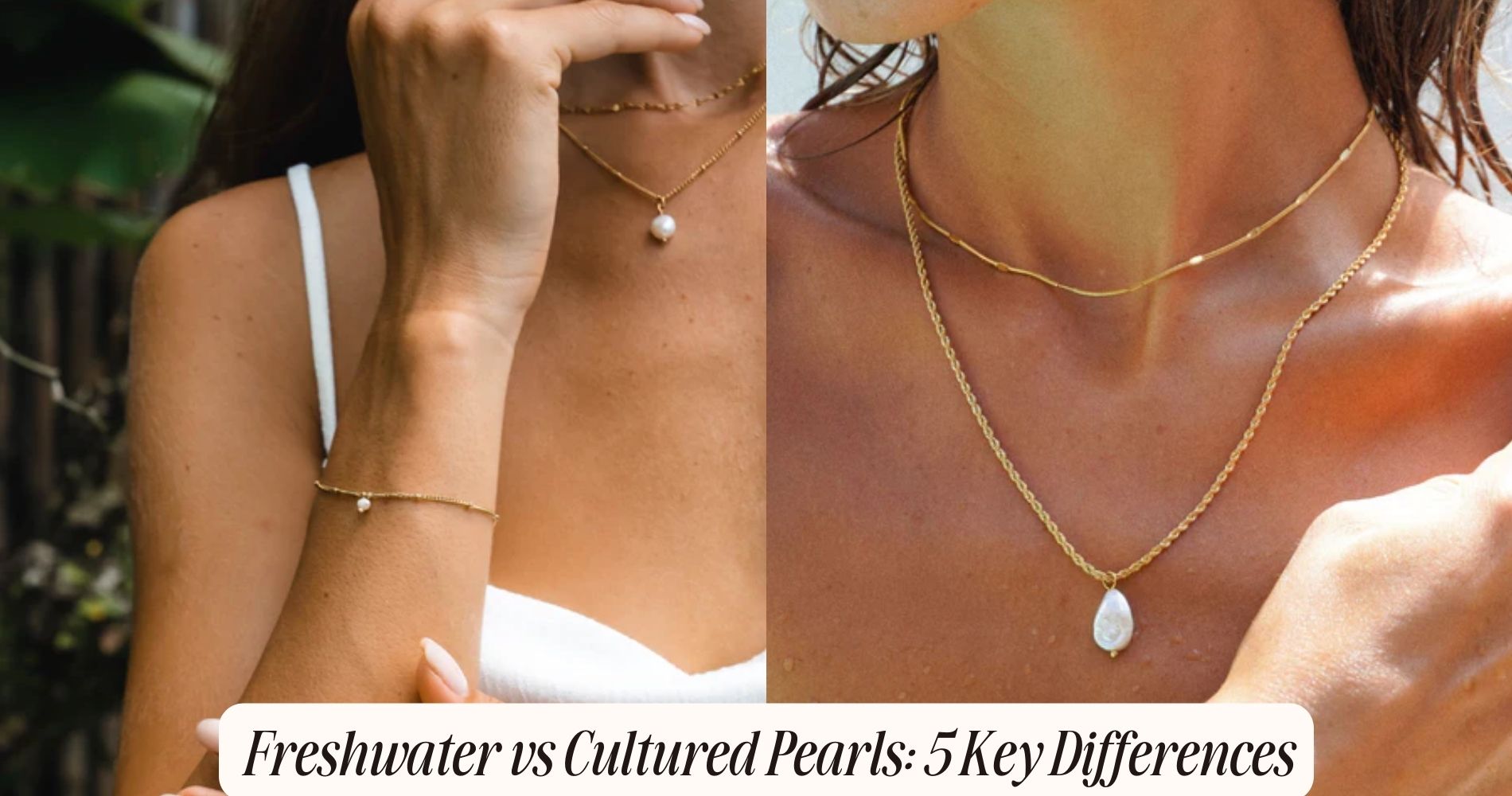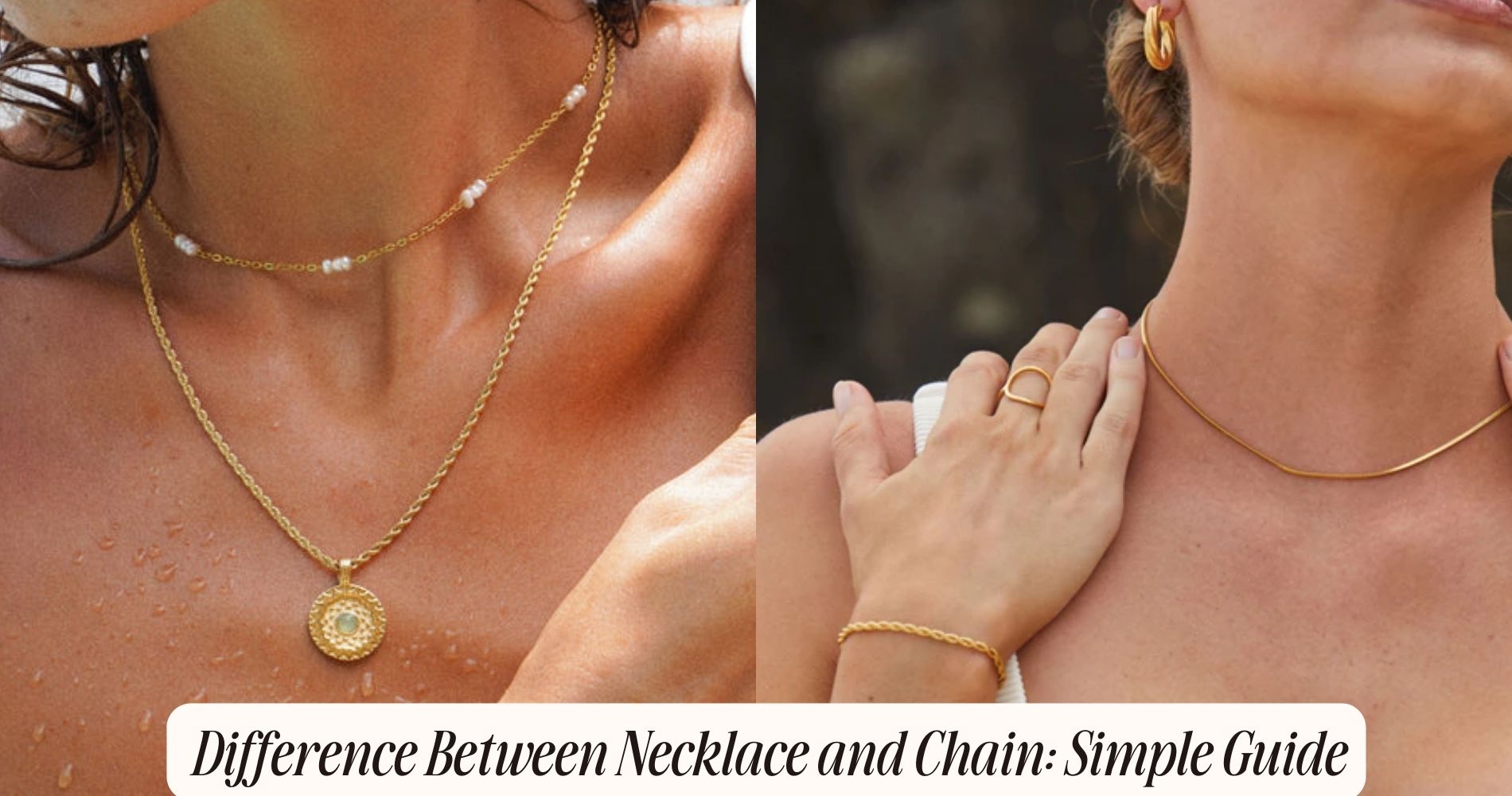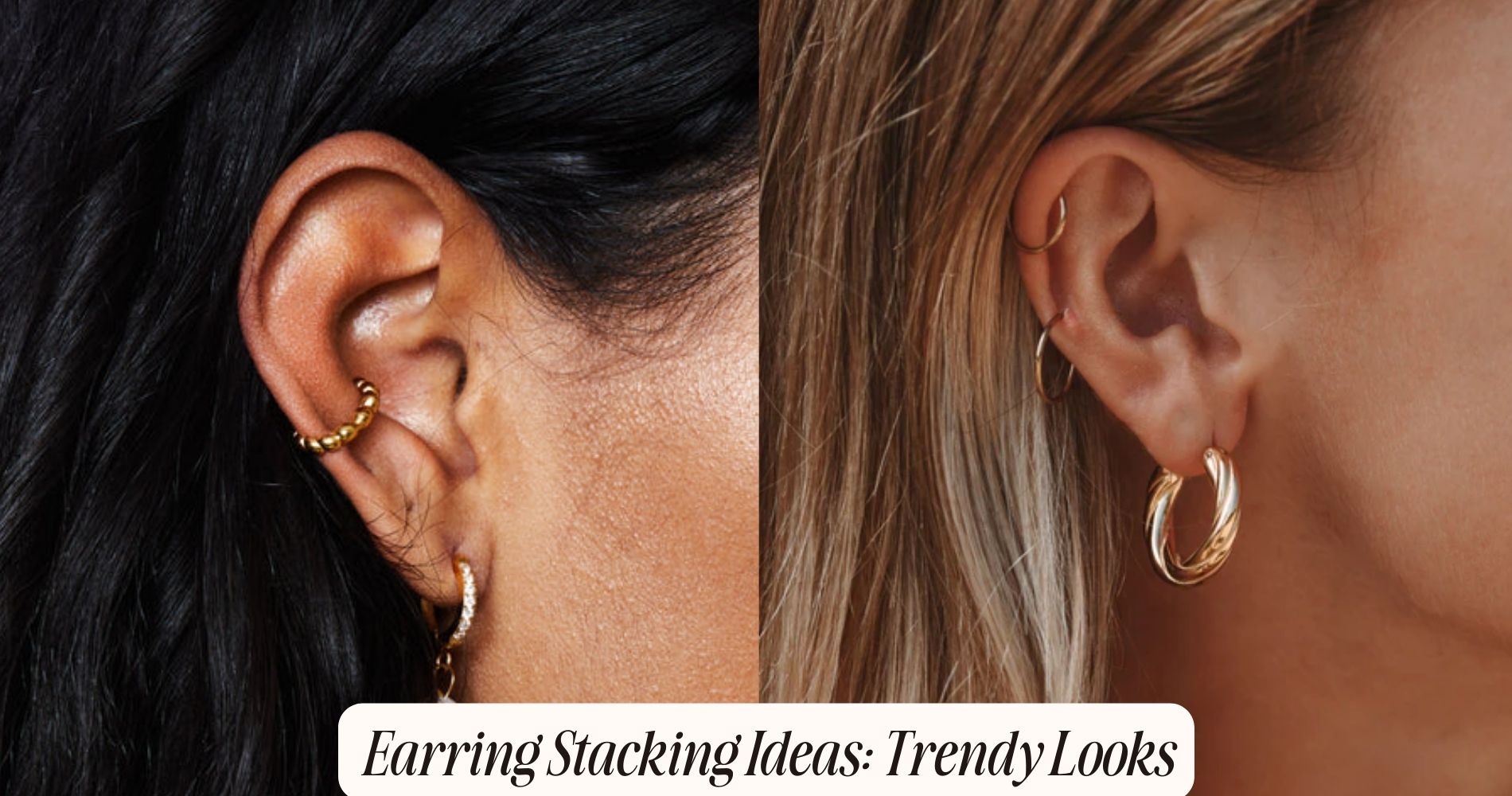
Freshwater vs Cultured Pearls: 5 Key Differences
When exploring the difference between freshwater and cultured pearls, consider five essential factors. Freshwater pearls are typically created using mantle tissue without a bead nucleus, leading to a variety of shapes, while cultured pearls incorporate a bead nucleus, achieving a more uniformly round appearance. Freshwater pearls boast a broader spectrum of colors, such as white, pink, lavender, and peach. In terms of durability, the thicker nacre of freshwater pearls enhances their resilience. Economically, freshwater pearls tend to be more budget-friendly, whereas cultured pearls, including varieties like Akoya, South Sea, and Tahitian, are prized for their higher market value and resale potential. To delve deeper into these distinctions, explore our Freshwater Pearls Jewelry collection.
Formation Process
The formation process of freshwater pearls involves the deliberate insertion of a small piece of mantle tissue into a host mollusk. Cultured pearls typically require a bead nucleus and mantle tissue implantation in saltwater oysters.
In freshwater pearls, this technique leverages a natural formation approach where the mollusk's own biological processes enclose the tissue fragment with nacre, creating a pearl over time. This method is known as tissue nucleation and doesn't utilize a hard core, resulting in pearls that are often entirely nacre.
Conversely, cultured pearls undergo a more complex nucleation process. A bead nucleus, usually made of shell, is inserted along with a piece of mantle tissue into the gonad of a saltwater oyster. This nucleus acts as a core around which the oyster deposits layers of nacre. The inclusion of the bead nucleus accelerates the initial pearl formation, ensuring a more uniform shape and size.
Understanding these distinct formation processes is important, as they greatly influence the pearl's structure and quality. While freshwater pearls rely on a more organic nucleation process, cultured pearls use a controlled method to achieve desirable traits. This knowledge helps you appreciate the intricate science behind each pearl type's creation.
Appearance and Shape
Examining the appearance and shape of freshwater and cultured pearls reveals notable differences influenced by their distinct formation processes. Freshwater pearls, typically grown in mussels, often exhibit a unique appearance. They're less likely to achieve a perfectly round shape due to the organic, less controlled cultivation environments. Instead, you'll find a variety of shapes such as baroque, oval, and teardrop, which can add a distinctive allure to jewelry pieces.
Cultured pearls, especially those cultivated in saltwater oysters, are more likely to achieve a round shape. This is largely due to the precise and controlled techniques used in their cultivation. By carefully inserting a round bead nucleus, pearl farmers can significantly enhance the likelihood of producing near-perfectly spherical pearls. This meticulous process yields pearls with a uniform shape and a smooth, lustrous surface, making them highly desirable in the jewelry market.
When you compare the two, you'll notice that cultured pearls often possess a more consistent and traditional aesthetic, while freshwater pearls offer a diverse and unique appearance that appeals to those seeking individuality. Understanding these differences helps you appreciate each type's intrinsic value and the craftsmanship involved in their creation.
Color Variety
In addition to their shape and appearance, the color variety of freshwater and cultured pearls also reveals distinct differences influenced by their respective cultivation environments. Freshwater pearls, generally farmed in mussels, display a broader spectrum of natural hues. These pearls naturally come in shades such as white, pink, lavender, and peach, thanks to the diverse range of mollusk species and water conditions they inhabit.
Cultured pearls, specifically saltwater varieties like Akoya, South Sea, and Tahitian, boast a more limited yet still impressive range of natural colors. Akoya pearls typically exhibit classic white or cream shades with rose or silver overtones, while South Sea pearls are renowned for their golden and white hues. Tahitian pearls stand out with their dark, exotic colors, spanning from peacock green to deep black.
Dyeing techniques further expand the color palette of both freshwater and cultured pearls. While freshwater pearls are more frequently subjected to dyeing due to their porous nacre, cultured pearls, particularly Akoya, are less commonly dyed to preserve their natural luster.
Understanding these color variations and the methods used to achieve them can greatly impact your choice, whether you seek a naturally hued piece or one with enhanced coloration.
Durability and Care
Maintaining the longevity and pristine condition of both freshwater and cultured pearls requires understanding their unique durability characteristics and proper care techniques. Freshwater pearls, composed largely of nacre, exhibit a high degree of resilience. They can withstand daily wear and minor abrasions better than their cultured counterparts, which often have a thinner nacre layer over a bead nucleus. This structural difference greatly impacts longevity factors, making freshwater pearls less susceptible to chipping and peeling.
To guarantee your pearls last, follow these maintenance tips:
First, always put on your pearls after applying cosmetics and perfumes to avoid chemical exposure. For cleaning, use a soft, damp cloth—never abrasive materials. Freshwater pearls benefit from occasional gentle washing with mild soap and water, while cultured pearls require more cautious handling due to their delicate nacre.
Additionally, store pearls in a soft-lined box or pouch to prevent scratches and tangling. Avoid prolonged exposure to direct sunlight and extreme temperatures, which can degrade the nacre's luster. Adhering to these care techniques will enhance the longevity of your pearls, preserving their beauty and value for years to come.
Market Value
Understanding the care requirements of pearls naturally raises questions about their market value, where factors like origin, size, luster, and surface quality create notable price variances between freshwater and cultured pearls.
Freshwater pearls, typically farmed in mussels, often present a more affordable option due to their higher occurrence and lower production costs. In contrast, cultured pearls, especially those from saltwater oysters like Akoya, Tahitian, and South Sea varieties, command higher prices because of their rarity and superior qualities.
Demand trends have a significant impact on market value. Freshwater pearls, though more accessible, might experience fluctuating demand based on fashion shifts and consumer preferences. Cultured pearls maintain a steadier demand due to their established reputation and perceived luxury status.
When considering resale potential, cultured pearls usually offer better prospects. Their higher initial cost, combined with enduring market desirability, means you're more likely to recoup a substantial portion of your investment. Freshwater pearls, while beautiful, generally don't hold their value as well over time.
Therefore, if you're looking at pearls as a potential asset, cultured varieties present a more promising option.
Frequently Asked Questions
How Long Do Freshwater and Cultured Pearls Typically Last?
When comparing the lifespan of freshwater and cultured pearls, both can last decades with proper care. Durability factors include nacre thickness and environmental exposure. Cultured pearls generally have thicker nacre, offering enhanced resilience and longevity.
Are Freshwater Pearls More Eco-Friendly Than Cultured Pearls?
You might find freshwater pearls more eco-friendly due to superior sustainability practices. Their farming often has a lower environmental impact compared to ocean-based cultured pearls, which can disrupt marine ecosystems and require intensive resource management.
Can Freshwater and Cultured Pearls Be Dyed?
Yes, you can dye both freshwater and cultured pearls. Advanced dyeing techniques allow you to achieve a wide range of color variations. By using organic and inorganic dyes, you can create intricate and vibrant hues.
What Are the Main Regions for Freshwater and Cultured Pearl Farming?
You'll find the main regions for freshwater pearl farming in China, leveraging advanced farming techniques. In contrast, cultured pearls primarily come from Japan, the Philippines, and French Polynesia, each utilizing specialized geographic distribution and techniques.
Do Freshwater and Cultured Pearls Have Different Symbolic Meanings?
Yes, freshwater and cultured pearls possess distinct symbolic significance. Freshwater pearls often symbolize purity and innocence, while cultured pearls carry cultural interpretations of wealth and sophistication. Both hold unique places in various cultural traditions.
Conclusion
Understanding the distinctions between freshwater and cultured pearls empowers you to make informed decisions.
Freshwater pearls, formed in mussels, offer diverse shapes and colors but require gentle care.
Cultured pearls, often spherical and uniformly lustrous, come from oysters and boast higher market value.
Both types have unique attributes, making each suitable for different preferences and purposes.
By recognizing these five key differences, you'll confidently select the ideal pearls to enhance your collection or investment portfolio.























Leave a comment
This site is protected by hCaptcha and the hCaptcha Privacy Policy and Terms of Service apply.